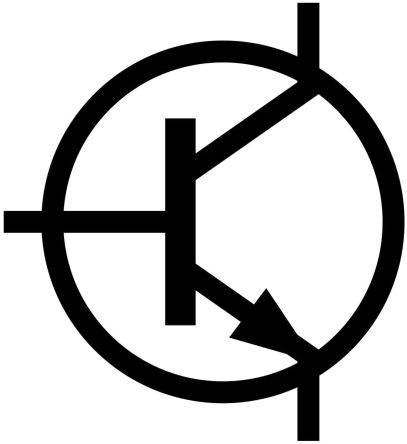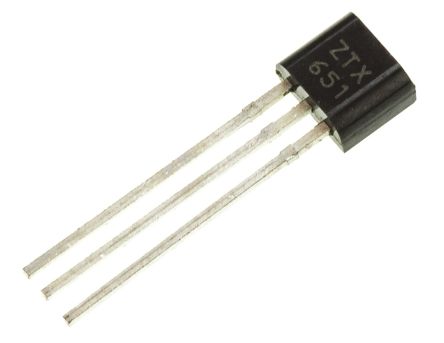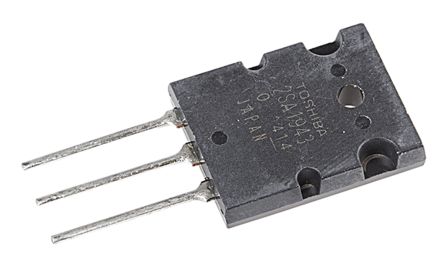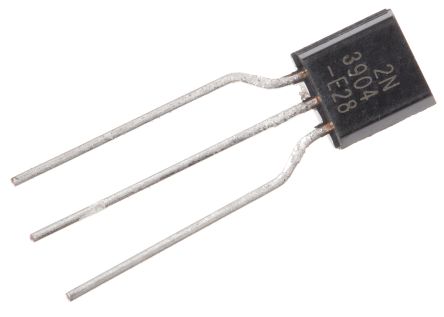
|
What is a bipolar junction transistor?

A bipolar transistor - properly known as a bipolar junction transistor, or BJT - is a versatile discrete semiconductor device. Discrete semiconductors are designed primarily to perform one function as a single semiconductor, as opposed to having to build multiple semiconductor components into an integrated circuit on a printed circuit board (PCB). Bipolar junction transistors are solid state, three-pin (base, collector and emitter) components, constructed from three layers of silicon. There are two main types of transistor, namely PNP (positive-negative-positive) and NPN (negative-positive-negative). As with all transistors, the basic function of a BJT is typically to amplify power.
Bipolar junction transistors are ‘current operated devices’, meaning a much smaller base current causes a larger current to flow from emitter to collector. Whereas transformers can amplify either current or voltage, transistors can amplify both. In its raw configuration, a BJT will naturally amplify current, but when integrated into a circuit it can easily be made to amplify voltage - and so a bipolar transistor is thus frequently used as a method of signal amplification across a broad spectrum of circuits, systems and product types.
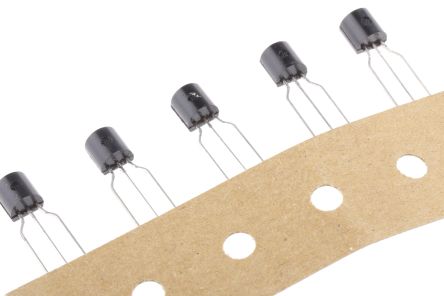
BJTs were among the first functional transistor devices ever created. The earliest bipolar transistors were the results of enterprising work done by renowned postwar physicists and engineers Bardeen, Brattain and Shockley - initially emerging from Bell Laboratories is the late-1940s, BJTs quickly became a universal standard in the decades that followed. Fittingly, their inventing trio were ultimately awarded the 1956 Nobel Prize for their efforts in bringing bipolar junction transistors to mass production.
Bipolar junction transistors can increase both analogue and digital signals, as well as having the ability to switch DC power or to function as an oscillator. While BJTs are designed primarily to amplify (analogue) current, they can also function as an electronic (digital) switch in circuitry.
What are bipolar transistors used for?

Transistors are used in a great many different types of electrical and electronic applications; indeed, they’re often seen as one of the fundamental building blocks of modern circuitry.
When used as discrete components or in smaller quantities, bipolar transistor devices can be used to amplify signals on circuits, or to create simple electronic logic switches. Transistors can also be combined into much larger quantities and arrays, providing a far more powerful and flexible range of functions for use in modern computing and other complex electronics processes.
You’ll find transistors - including BJTs - in a vast array of products and systems; more or less anything that uses electronic circuits to execute their functions, in fact. As such, any serious attempt to list all the potential uses of BJTs in electronics applications would be rather futile. However, it’s safe to say that amplification is certainly among the most common (and useful) applications of transistor technologies, in which they’re very frequently tasked with increasing either the voltage or the current of an input signal.
In a sense, bipolar junction transistors have today been somewhat usurped by MOSFETs in a majority of modern logic circuits, microprocessors and memory chips. That said, BJTs are still very commonly used in a variety of especially demanding applications, including microwave power amplifiers, mobile phone amplifiers, power-switching applications and ultra-high-speed logic circuits.
How does a BJT work?

Bipolar junction transistors are so-called because they’re created using two different kinds of silicon semiconductors to combine positive and negative charges (thus bipolar), and because those two different kinds of silicon are physically ‘sandwiched’ together (one between the others) in varying configurations, forming a type of junction.
A bipolar junction transistor comprises three terminals, or pins, known respectively as a base, a collector, and an emitter. As with any transistor, the core working concept of a BJT is that a small amount of current flowing between the base and collector pins causes a larger current to flow between the collector and emitter pins.
Again, in this regard, a transistor is essentially a type of amplifier - so, perhaps unsurprisingly, one of the most common applications you’ll find them in is helping to drive all kinds of modern audio technologies. Because bipolar devices can can be manufactured to handle large currents, they’re especially effective when used as high-power amplifiers in electronic audio I/O setups, as well as in various other demanding technologies such as wireless transmitters.
Like all transistors, BJTs can function both linearly and nonlinearly, depending on the range of the base-emitter current. Outside of a given model’s specified current range, the linear relationship between base-emitter current and collector-emitter current (also known as the gain) will cease to be linear - in other words, the BJT can be driven into ‘cutoff’ (off) and ‘saturation’ (on) modes, as well as its standard ‘active’ (amplification) mode.
In practice, you can think of a transistor switch as a type of valve for controlling the rate of electron flow through the component to the remainder of the circuit - in this analogy, the base pin functions a bit like the physical wheel of the valve. Depending on which operating mode the transistor is in (determined by the relative voltages on each of its three pins), the way current flows through it will be different:
-
‘Active’ mode
-
In this mode, the transistor can function as an amplifier for the current flowing from base pin to collector, and proportionally increase that current flow from the collector pin to the emitter
-
This is among the most versatile and powerful modes a transistor can operate in, and is arguably the most common application for transistors used in circuits
-
‘On’ or saturation mode
-
In this mode, the transistor effectively acts as a short circuit between the collector and the emitter, with current flow between the two essentially unrestricted (the transistor operates as a closed or complete circuit)
-
‘Off’ or cutoff mode
-
In this mode, which is the opposite of saturation, the transistor essentially resembles a broken or open circuit; no collector current is allowed to flow, and so there is no emitter current output
As we can see from the bullet points above, when driven into either cutoff or saturation modes, the BJT effectively functions more like a binary (on/off) circuit switch. In addition to amplification, this is another of the most powerful and versatile uses of transistors, as we’ll discuss in the following section.
How a BJT works as a switch
Controlling the flow of power from one part of an electronic circuit to another is one of the key functions a transistor exists to fulfil - and, in this role, the transistor is effectively acting as an electronic switch rather than an amplifier per se. When pushed into either saturation or cutoff modes, a BJT essentially replicates the binary on/off functionality of a regular circuit switch, and can thus be used to create logic gates.

(c) PNP transistor switch (We go into more detail later in the guide)
Transistors can be combined to create all the basic types of logic gates (AND, OR and NOT). Logic gates in turn allow for the building of all manner of integrated circuits, from simple microcontrollers to vastly complex microprocessing units, and so the importance of transistor switches to the building of modern electronic circuits is difficult to overstate.
BJTs and other transistor types have various characteristics that make them highly effective for use as electronic switches:
-
They can switch states incredibly quickly
-
In practical terms, this translates to the sorts of extremely high frequencies required to run modern computer system-on-chip (SoC) circuits
-
They can take a low input current and use it to output a much larger one
-
Whereas mechanical switches always need an actuator to be physically moved in order to function, the binary on/off states of a transistor switch are instead controlled by voltage at the base pin
-
Unlike mechanical switches, they can be controlled by a PWM (pulse-width modulation) signal
-
Transistor switches don’t suffer from any physical ‘bounce’, unlike mechanical versions
Types of BJT
In the construction of a bipolar junction transistor, three layers of semiconductor material are sandwiched together. Depending on how these layers are arranged, we get two main types of bipolar transistor - PNP or NPN.
A semiconductor is a type of material that allows a certain level of electron flow through it, and is therefore neither a true conductor nor an insulator. The overall level of conductivity for a given semiconductor material can be influenced by introducing various impurities at the manufacturing stage, in a process known as ‘doping’.
By impacting on the number of electrons in the semiconductor material, doping can either increase or decrease both its conductivity and the direction of current flow from layer to layer, depending on the type of impurity added or removed and the way the layers are arranged.
In a BJT, either one or two of its semiconductor layers will have been ‘doped’ to increase the electron count (making it negatively charged, or N-type), while the remaining one or two layers will have been ‘doped with holes’ to introduce electron deficiencies (making it positively charged, or P-type).
Again, depending on the type and arrangement of doped layers in the BJTs semiconductor ‘sandwich’, the direction of current flow across the BJT can thus be flipped. This allows us two basic types of bipolar transistor construction, namely PNP and NPN. A PNP transistor has a layer of N-type semiconductor sandwiched between two layers of P-type material, and the reverse is true of an NPN transistor:
-
The acronyms PNP (positive-negative-positive) and NPN (negative-positive-negative) denote the ordering of the sandwiched semiconductor layers in the BJT
-
Current will flow in either one direction or the other, depending on this arrangement of silicon layers
-
NPN transistors have a piece of P-type silicon (the base) sandwiched between two pieces of N-type (the collector and emitter)
-
PNP transistors reverse this order
-
The most commonly used transistor configuration is the NPN Transistor
NPN bipolar transistors |
|
NPN transistors are the most commonly used type, and are manufactured such that electrons pass from emitter pin to collector pin. This causes current to flow the other way, i.e. from collector to emitter, and then onward to the rest of the circuit - essentially the ‘standard’ configuration for a transistor. In practice, this means that an NPN transistor turns ‘on’ when the current flows through its base. |
PNP bipolar transistors |
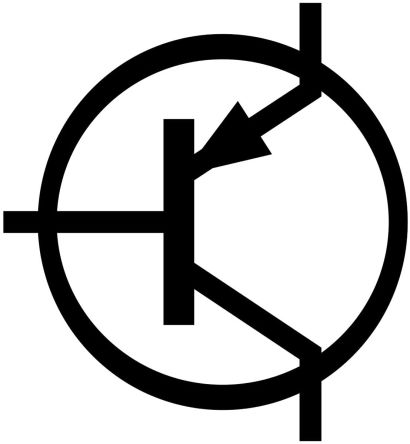 |
The core functioning of a PNP BJT is exactly the same as in the example outlined above, but - to oversimplify somewhat - with the entire process unfolding in reverse. Thus, current flows from the emitter pin to the collector pin, rather than the other way around, with the collector receiving an absence of electrons (the aforementioned ‘holes’). Although the base pin still controls the overall flow rate, a PNP transistor is turned to ‘on’ by a low signal (ground), as opposed to an NPN transistor which is turned to ‘on’ by a high signal (current). This makes a PNP transistor able to amplify AC signals in applications such as driving speakers, pulling the speaker cone inward from its neutral position to generate louder sounds through air movement than DC currents (which only push it outward). |
Popular brands
Follow one of these links to view popular brands of bipolar transistors.
